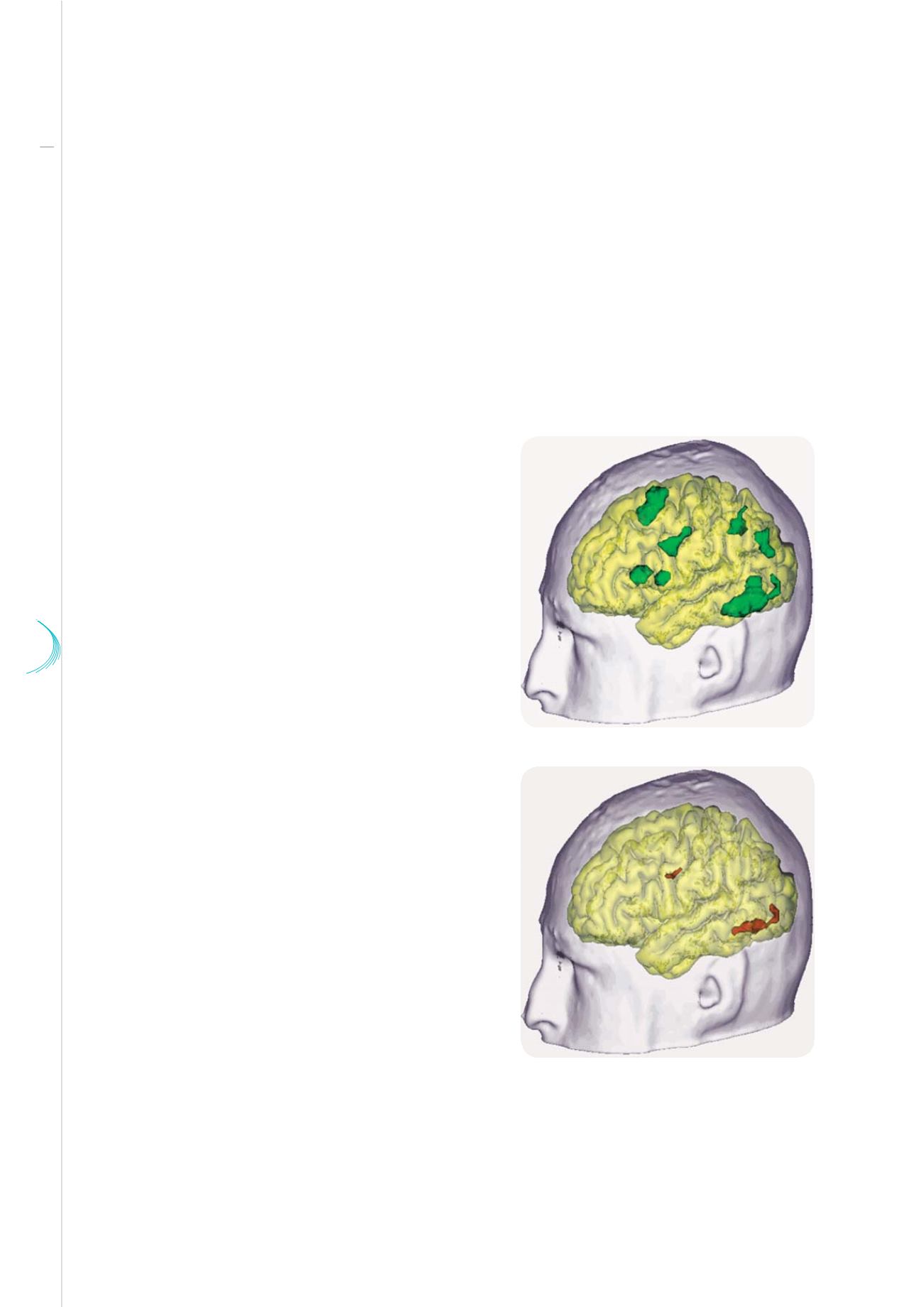

37 38
38
La Lettre
Functional magnetic resonance imaging of a
individual reading a word in a conscious or non-
conscious way
Reading in a conscious way
Reading in a non-conscious way
© From Dehaene S, et al. Nat Neurosci 2001 ; 4 : 752-8
Step 3: the evolution of the brain and the origin of culture
The brain evolved dramatically and differentially, both in size and complexity. Brain size increased,
especially the surface of the cerebral cortex and more specifically its front part: the prefrontal cortex.
Left/right hemispheric asymmetry developed. The number of brain neurons increased, from 50 million
in mice to nearly 100 billion in humans. At the same times, new psychological functions appeared: self-
awareness, our ability to consider others as oneself, symbolic life, with spoken and then written language.
All these functions, defined as “cognitive”, now fall within the scope of the scientific method. To deal
with them, several disciplines must converge: brain imaging, electrophysiology, psychophysics and
computational modelling. Another revolution is underway: it stems from Socrates’ "
Know thyself
" and even
Descartes’ "
Cogito ergo sum
"!
Eminent scientists have embarked on this path, such as Jouvet or Buser, Crick or Edelman. The strong
idea behind it is that conscious processes,
shared by all human beings, develop in common
physical spaces of our brains. There, takes place
the “global and unitary” synthesis of perceived
exterior events and inner memories. Dehaene
and I have suggested that neurons with very
long axons might create interconnections
between these different territories of the brain
and contribute to building this conscious
space. Such a network involves the prefrontal,
parietotemporal and cingulate cortices, the latter
being involved in emotions. It is possible within
this neuronal space to make out the brain images
obtained while visual processes are taking place,
whether consciously or non-consciously.
No mysteries, but still a lot to discover!
Everyone might wonder what critical genetic
modifications have led to the astounding
increase in structural complexity entailed by
such cognitive functions. In 1830, Geoffroy
Saint-Hilaire suggested at our Académie that
there was a unity of plan in the organisation
of animal species. The central nervous system
is on the front part of this plan. We now know,
especially through Nüsslein-Volhard’s pioneer
work, that this plan is determined by a network


















